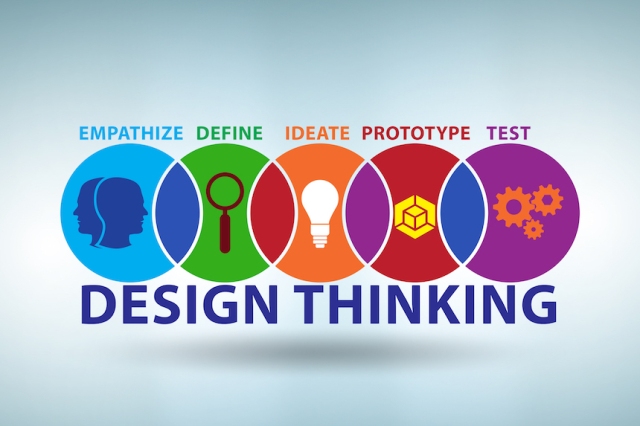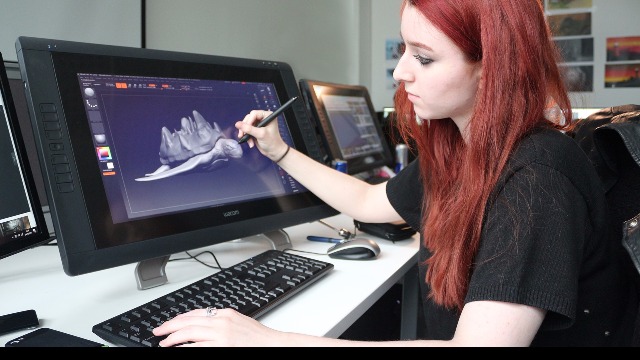For Students
What is Design Thinking and how it can be used in different fields
Admin Jul 19, 2023 12:35 PM

TAGS
Design thinking is a problem-solving and innovation methodology that focuses on understanding user needs, exploring creative solutions, and rapidly prototyping and testing ideas to arrive at effective and user-centric solutions. It originated from the design field but has since been widely adopted across various industries and fields due to its versatile and human-centered approach to problem-solving.
The typical design thinking process consists of several iterative stages:
- Empathize: The first step is to deeply understand the needs, desires, and pain points of the users or customers for whom the solution is being designed. This involves conducting interviews, observations, and other research methods to gain insights into their experiences.
- Define: Once the research is gathered, the design thinking team synthesizes the information to define the core problems and challenges that need to be addressed. This step helps in reframing the problem from the user's perspective.
- Ideate: During this stage, brainstorming sessions are conducted to generate a wide range of creative ideas and potential solutions. There are no judgments at this point, and the goal is to encourage out-of-the-box thinking.
- Prototype: In this phase, the most promising ideas from the ideation stage are turned into tangible prototypes or representations of the potential solutions. These prototypes can be physical or digital, depending on the context.
- Test: The prototypes are then tested with real users to gather feedback and insights. The design thinking team observes and analyzes how users interact with the prototypes and makes necessary iterations based on the feedback received.
- Iterate: The process is iterative, and based on the test results, the team goes back to the ideation and prototyping stages to refine and improve the solutions. This loop continues until a desirable and viable solution is achieved.
Design thinking can be applied to various fields and industries, including but not limited to:
- Product Design: Design thinking is commonly used to create user-friendly and innovative products by understanding the needs and preferences of the end-users.
- Service Design: It helps in designing or improving services to better meet the customers' requirements and provide a seamless experience.
- Business Strategy: Design thinking can be applied to develop new business models, identify growth opportunities, and improve the overall organizational strategy.
- Healthcare: By empathizing with patients, caregivers, and healthcare professionals, design thinking can lead to improved medical devices, patient experiences, and healthcare processes.
- Education: Design thinking can be used to develop engaging and effective learning experiences, curriculums, and educational tools.
- Social Innovation: Design thinking has been successfully applied to address social issues and challenges, such as poverty, accessibility, and sustainability.
- Government and Public Policy: By understanding citizens' needs and collaborating with stakeholders, design thinking can lead to more citizen-centric policies and services.
- Technology: Design thinking can help in creating user-friendly software and digital experiences, improving user interfaces, and enhancing user satisfaction.
Design thinking is not just for certain businesses or professions. It is a way of thinking that encourages innovation, teamwork, and creativity. We may overcome obstacles more successfully and come up with creative solutions by applying design thinking into our daily lives.
Design thinking is a useful skill that may be used in many facets of our lives, to sum up. We are able to approach problems from a new angle and come up with creative solutions thanks to its emphasis on empathy, problem description, ideation, prototyping, and iteration. Overall, design thinking's adaptable and human-centered approach makes it a powerful tool for problem-solving in various domains, fostering innovation, and driving positive change. So embrace design thinking to help you negotiate the complexity of the world around you and unleash your creative potential.
Search
Latest Blogs

Exploring Opportunities in Emerging Engineering field
Admin
Dec 14, 2024 05:18 PM

Navigating College Majors
Admin
Sep 25, 2024 04:04 PM

Tools for Measuring Strengths For Career
Admin
Sep 25, 2024 03:27 PM
Interested in getting latest updates?
SUBSCRIBE


















